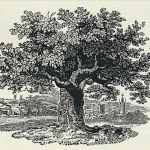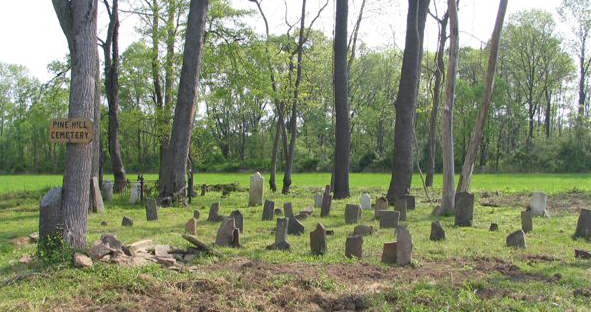This is a continuation of my study of the Cook Proprietary Tract, this time focusing on the southern half of the tract that was purchased by Richard Rounsavell in the mid 18th century. (See Rounsavells of Amwell.)
Rounsavell
Rounsavells of Amwell
Concerning the history of one of Hunterdon’s Earliest Families
This article is a continuation of the history of the Cook Proprietary Tract,1 The previous articles dealt with the northern half of the tract. It is time to turn our attention to the southern portion, half of which came into the possession of the Rounsavell family at a very early date, and remained in the family for many years thereafter. The other half was acquired by John Young, and after his death was conveyed to John Hice in 1789. The Young and Hice families will have to wait for another time.
The Rounsavell Tree
 The Rounsavells originated in England before coming to Stratford, Connecticut, then to Southampton, Long Island, and finally to Hopewell, New Jersey in the early 18th century. That first couple to settle in Hopewell was Richard (1658-1704) and Hannah Rounsavell. I have begun this tree with their son Richard (c.1695-1775), even though they had one other son, Benjamin, and a daughter Martha. It was this second Richard who settled in Amwell Township, Hunterdon County.
The Rounsavells originated in England before coming to Stratford, Connecticut, then to Southampton, Long Island, and finally to Hopewell, New Jersey in the early 18th century. That first couple to settle in Hopewell was Richard (1658-1704) and Hannah Rounsavell. I have begun this tree with their son Richard (c.1695-1775), even though they had one other son, Benjamin, and a daughter Martha. It was this second Richard who settled in Amwell Township, Hunterdon County.
Rake Cemetery, part two
Burials in the Rake Cemetery
In 1922, Hunterdon historian Hiram Deats visited the Rake Cemetery. He found 44 unlettered stones and 25 lettered ones. Those 25 stones were listed in the Hunterdon Historical Newsletter (vol. 3 no. 3, p. 2) and are give here.
The Cook Proprietary Tract
The Hammond Maps of Hunterdon County proprietary tracts are a wonderful resource for county historians. Many of the property owners shown on these maps drawn by D. Stanton Hammond in 1963 were the first Europeans to claim title to this part of the state of New Jersey. What happened to those properties in succeeding years has always fascinated me and provided wonderful material for my articles.
The Sine Farm
For the final installment of my study of the Haddon Tract,1 I am turning to the remainder of the property that was left to Nicholas Sine. As a reminder, Nicholas Signe/Sayn/Sine was a partner with another German immigrant, Jacob Sniter, in the 1748 purchase of 1300 acres of the Haddon Tract, a 2,000-acre plot that was surveyed for John Haddon in 1711. Daniel Robins had purchased the other 700 acres.
The Barns-Bearder Farm
My previous article discussed the Bearder family and the home of Andrew Bearder, Sr. on the Locktown Flemington Road. Just east of this farm was another tract that Bearder shared with his son Jacob, but whose ownership goes back much further.
Andrew Bearder, Sr.’s homestead farm was part of Jacob Snyder’s plantation. But the farm next to it on the east was part of the 700 acres first sold by the Haddons to Daniel Robins. (For background on the Haddons, see The Haddon Tract, part one.)
Haddon Tract, part one
I have recently finished reading a book titled Elizabeth Haddon Estaugh, 1680-1762, Building the Quaker Community of Haddonfield, New Jersey, 1701-1762, by Jeffery M. Dorwart and Elizabeth A. Lyons.
It is an excellent book, and I highly recommend it for anyone interested in the life of one of West New Jersey’s early settlers—a young woman who came to the Province on her own in 1701.
Pine Hill Cemetery

In 2009, I published an article about this interesting cemetery on the website The Delaware Township Post. This coming June, this cemetery will be the focus of a celebration; most of the original Williamson farm has been purchased from Bryce Thompson by the N. J. Conservation Foundation in partnership with the State of New Jersey, Hunterdon County and Delaware Township. The cemetery is part of this new addition to preserved lands in our town. I am delighted! Here is the article: